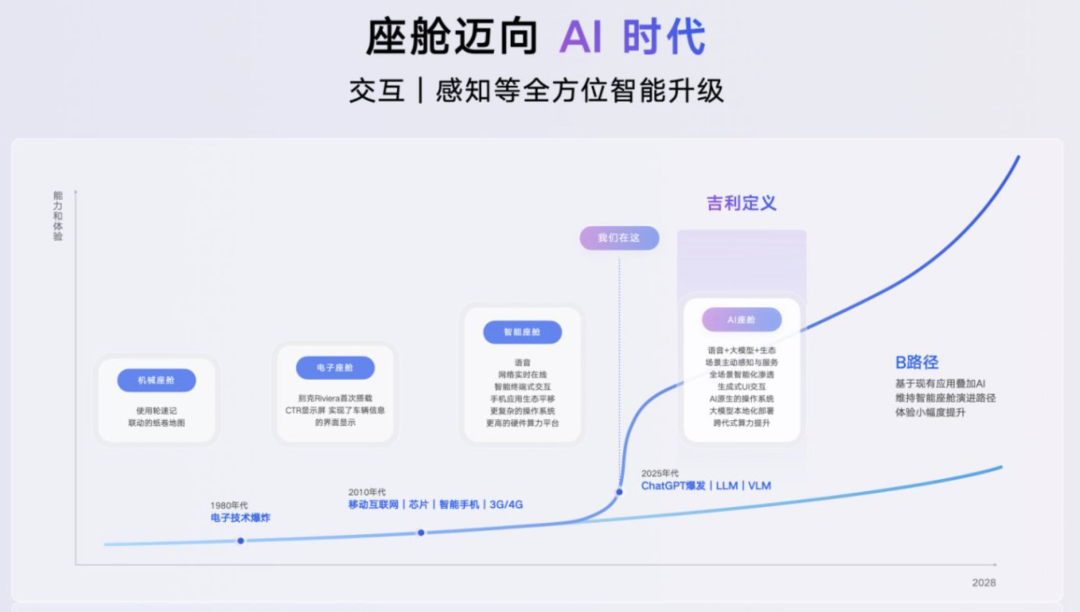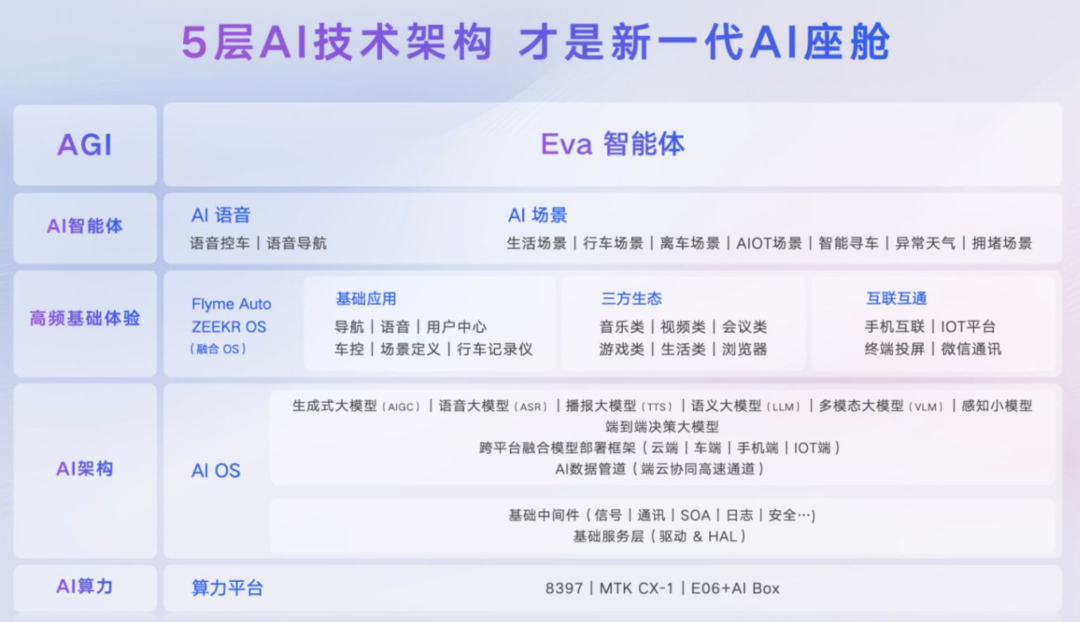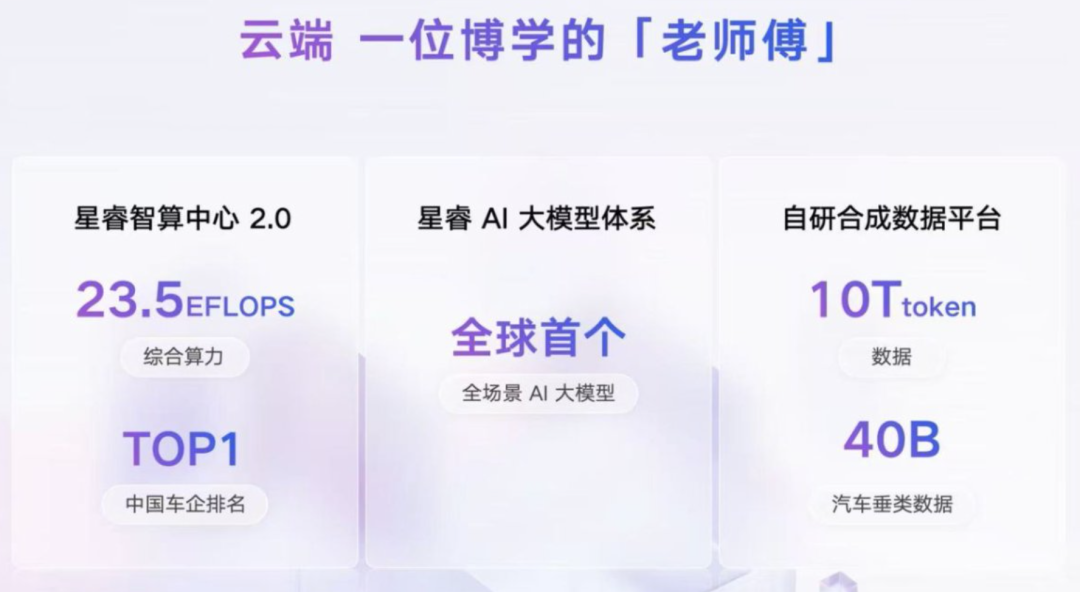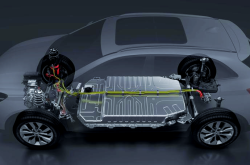Geely AI Box: Computing Power as the Foundation, Large Models as the Core
![]() 08/21 2025
08/21 2025
![]() 669
669
Produced by Zhineng Zhixin
In the race for smart cars, while interaction and user experience often take center stage, chips and computing power serve as the unsung heroes, forming the bedrock of technological advancements. Historically, automakers have focused on refining automotive-grade chips, yet a clear bottleneck remains: insufficient computing power.
A multimodal large model with 7 billion parameters demands a computational capacity far surpassing the limits of traditional chips, leading to smart cabins characterized by quick but shallow responses, with rigid speech recognition and disjointed application ecosystems.
Rather than awaiting an upgrade in automotive-grade chip performance, Geely has opted to bypass this limitation with an innovative solution: the AI Box, an independent AI computing unit that essentially serves as a 'computing power booster' for the cabin.
The AI Box enables Geely to run large models on the edge side for the first time, seamlessly collaborating with cloud computing power to establish a dynamic balance: the vehicle side handles real-time tasks and ensures security, while the cloud side focuses on learning and updates.

Part 1: Computing Power Bottleneck and Chip Limitations: The Constraints of AI Cabins
In the nascent stages of automotive intelligence, automakers equated intelligence with feature integration: faster speech recognition, a more diverse app ecosystem, and sleek UI designs. However, as user demands evolved, this approach revealed two fundamental flaws:
◎ Rigid Interaction: Speech recognition systems often execute predefined commands, lacking contextual and emotional understanding.
◎ Fragmented Functionality: Disparate applications fail to interact, leading to a disjointed user experience.

The crux of these issues lies in inadequate computing power. Despite their high reliability and safety, automotive-grade chips are constrained by heat dissipation, cost, and power consumption, typically supporting only lightweight models. With the burgeoning development of large models in speech, vision, and multimodal domains, the demand for onboard computing power has surged exponentially.
Consider a multimodal large model with 7 billion parameters; relying solely on traditional chips would severely hinder both computational speed and efficiency, potentially failing to meet basic real-time interaction requirements.
This explains why smart cabins have long struggled to transcend the 'quick response but shallow understanding' barrier: the limitations of computing power restrict the full expression of AI capabilities.

Geely's groundbreaking approach involves introducing the AI Box, an independent AI computing unit that transcends the closed architecture of traditional automotive-grade chips. Serving as an external module, it provides the cabin with high-performance computing power.
This design offers several key advantages:
◎ Computing Power Leap: The AI Box enables the operation of a 7-billion-parameter multimodal large model on the edge side, allowing vehicles to perform complex speech understanding, image recognition, and multitasking independently of the cloud.
◎ Bandwidth Enhancement: Beyond boosting computing power, the AI Box broadens data channels within the cabin, facilitating faster integration of voice, vision, navigation, and other multi-source information, thereby preventing 'information bottlenecks.'
◎ Flexible Upgrades: Unlike automotive-grade chips, which are challenging to iterate once embedded, the AI Box offers greater flexibility for replacement and upgrades. As model scales expand, users can continuously enjoy the latest experiences through module updates without waiting for a new car.
This approach marks a paradigm shift in the industry, transcending simple hardware stacking to systematically unlock and evolve computing power.
Part 2: Synergistic Computing Power Between Vehicle and Cloud
The AI Box alone does not constitute a holistic intelligent experience. Geely's 'master craftsman + butler' model epitomizes the collaborative synergy between vehicle-side and cloud-side computing power.
◎ Cloud-side Computing Power (Master Craftsman): Boasting vast model scales and data reserves, it enables continuous learning and updates, serving as the fount of knowledge and experience.
◎ Vehicle-side Computing Power (Butler): The executor of real-time interactions, it ensures immediate responses and safety control, underpinning users' daily experiences.


This division ensures both the immediacy of interactions and the cloud's learning and updating capabilities. The AI Box further amplifies vehicle-side computing power, enabling it to handle complex tasks independently of the cloud.
This model holds two significant implications:
◎ Real-time Assurance: Vehicles maintain high levels of intelligent interaction even in unstable network environments.
◎ Consistent Experience: Users enjoy a uniform experience regardless of location, be it in urban or remote areas.
In essence, enhancing vehicle-side computing power does not aim to replace the cloud but to forge a more efficient collaborative relationship. Computing power is not an end in itself but the catalyst for an enriched user experience.
Building upon the AI Box and computing power architecture, Geely has developed a cabin experience system centered around intelligent agents.
Eva, the ultra-humanoid intelligent agent, embodies the fruition of computing power. Its seamless memory, multitasking abilities, and emotional interactions rely on the efficient operation of large models on the edge side. Without a breakthrough in computing power, Eva would remain a mere concept. It is the synergy between the AI Box and computing power that brings Eva into users' daily lives.
In essence, chips and computing power form Eva's 'body,' while AI models and intelligent agents constitute its 'soul.' This fusion propels the cabin from mere 'function integration' to a 'personalized companion.'
Summary
The interplay between chips and computing power defines the ceiling of automotive intelligence. Geely's AI Box and computing power collaboration model introduce large models into the cabin, transforming computing power from a constraint on user experience into the bedrock supporting the intelligent agent Eva.
In the forthcoming competition for smart cabins, the victor will be the one who first resolves the structural tension between computing power and chips. Geely's choice to 'bypass chips and reconstruct computing power' offers a comprehensive and innovative solution.








